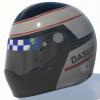Hi all, long time no post.
I'm trying to put together some sort of lineage timeline for WEC/WSC/Le Mans + IMSA / ALMS / Can-AM / Any of the American Sportscar series - mostly for my filing of cars in my Assetto Corsa mods archive
https://docs.google....t#gid=470905361
I'd like to get everyone's / anyone's thoughts on any gaps or how this can be improved.
I know the timeline is much, much, much more convoluted than this, but I am basically trying to simplify it as best as possible.
At the moment, I have only gone from the introduction of FIA's Groups in 1966 (for Europe/WSC/WEC) and from both the Can-Am series and introduction of the IMSA GT Championship in 1971 on the stateside.
Essentially, for top tier prototypes:
Europe / WEC : Group 6 > Group 5 > Group 6 > Group C > LMP > LMP900 > LMP1 > Hypercar
IMSA : Group 7 > Group C > LMP > LMP900 > LMP1 > Daytona Prototype > DPi > Hypercar
GT racing is the tough one to crack for me. So many iterations and differations between Groups 4, 3 and 2 in the 60s (and then Group 5 again in the 70s), and then GT1, GT2, GT3, GTE/GTLM, N-GT for Europe and GTO, GTS, GTU, GTX, GTD, GTC, GT3, GTE in America.
Edited by NCB619, 12 March 2024 - 07:50.

















